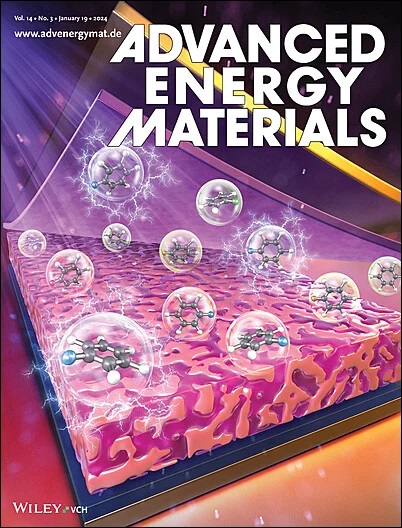Mapping Reaction Mechanism During Overcharge of a LiNiO2/Graphite–Silicon Lithium-Ion Battery: A Correlative Operando Approach by Simultaneous Gas Analysis and Synchrotron Scattering Techniques
IF 24.4
1区 材料科学
Q1 CHEMISTRY, PHYSICAL
引用次数: 0
Abstract
Li-ion battery degradation processes are multi-scale, heterogeneous, dynamic, and depend on the battery usage. Degradation mechanisms during overcharge of LiNiO2 are well known at the material level featuring O2 gas release and concomitant surface reconstruction of LiNiO2. However, there are still debates regarding the role of the high voltage phase formation, so called O1, on gas production. Moreover, little information is available on the effect of produced gases on the cell components (anode or sensors), or the effect of overcharge on electrode level behavior. In this work, we simultaneously measure the gas evolution using operando mass spectrometry while spatially resolving nanostructure and crystallographic lattice parameter changes using operando micro small/wide angle X-ray scattering (SAXS/WAXS) mapping during the formation and overcharge of a LiNiO2/Graphite─Silicon pouch cell. This new correlated operando characterization experiment allowed to (1) confirm the absence of O1 phase even with substantial gas produced at end of charge, (2) unveil the effect of gases on reference electrode and (3) show that overcharge increases in-plane reaction heterogeneities by creating local degraded regions lagging behind the ensemble electrochemistry. These findings will be important to optimize ageing of devices based on similar chemistries, in particular Ni-rich cathodes, while showing the strength of correlated characterization leading to more efficient and robust information on complex mechanisms.

求助全文
约1分钟内获得全文
求助全文
来源期刊

Advanced Energy Materials
CHEMISTRY, PHYSICAL-ENERGY & FUELS
CiteScore
41.90
自引率
4.00%
发文量
889
审稿时长
1.4 months
期刊介绍:
Established in 2011, Advanced Energy Materials is an international, interdisciplinary, English-language journal that focuses on materials used in energy harvesting, conversion, and storage. It is regarded as a top-quality journal alongside Advanced Materials, Advanced Functional Materials, and Small.
With a 2022 Impact Factor of 27.8, Advanced Energy Materials is considered a prime source for the best energy-related research. The journal covers a wide range of topics in energy-related research, including organic and inorganic photovoltaics, batteries and supercapacitors, fuel cells, hydrogen generation and storage, thermoelectrics, water splitting and photocatalysis, solar fuels and thermosolar power, magnetocalorics, and piezoelectronics.
The readership of Advanced Energy Materials includes materials scientists, chemists, physicists, and engineers in both academia and industry. The journal is indexed in various databases and collections, such as Advanced Technologies & Aerospace Database, FIZ Karlsruhe, INSPEC (IET), Science Citation Index Expanded, Technology Collection, and Web of Science, among others.
 求助内容:
求助内容: 应助结果提醒方式:
应助结果提醒方式:


